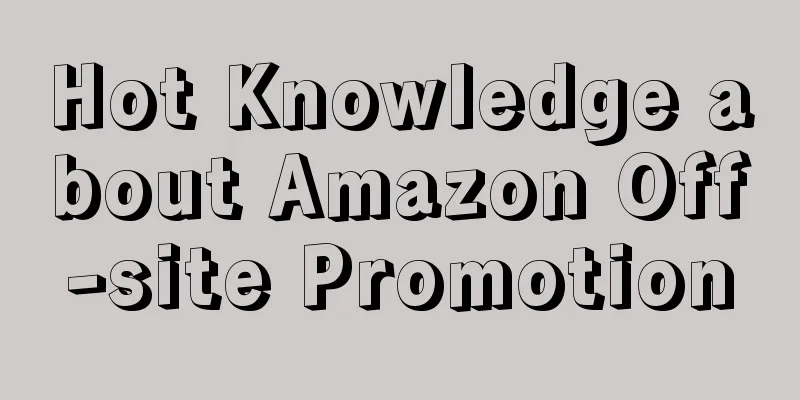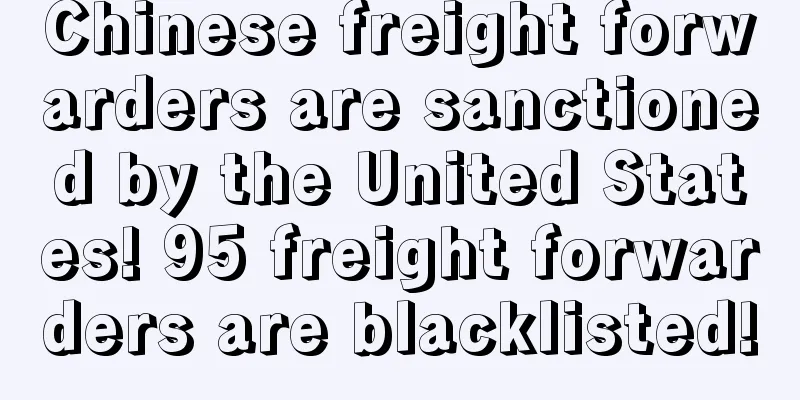Basic knowledge outside the site
We have clearly understood what is on-site and what is off-site. In a nutshell, all traffic on the Amazon platform is on-site traffic. For example, keyword traffic, advertising traffic, on-site promotions (LD DOTD BD, etc.), brand traffic (such as Anker). All traffic outside the Amazon platform is off-site traffic. For example, traffic from well-known websites or KOL blogs, traffic from deal sites or social media deal groups, EDM marketing, offline event traffic, etc. Since most sellers cannot use SEO, EDM, KOL, PR and other methods, we will only focus on off-site discount promotion (Deal), hereinafter referred to as off-site promotion , in this article, and how it can help most small and medium-sized sellers. From the seller's perspective: Why is there a need for off-site promotion ? What is the demand behind it?
Through connecting with a large number of sellers’ off-site needs in the past few years, I have summarized the needs as follows: Clear inventory, reduce inventory pressure, and increase IPI value Improve BSR ranking and assist in site operations Promote new products to increase the early traffic and conversion of new products and reduce the proportion of fake orders Profit from selling goods outside the site This is more difficult, after all, most of the off-site sales are at break-even or have only a very small profit. FBM domestic small package delivery is a common way to make profits from selling goods outside the site Boost sales: Significantly increase store sales in a short period of time and achieve store and company-related goals
From the buyer's perspective: Why does the off-site marketing market exist? Why is it growing stronger? Through long-term communication with foreign influencers and observation of market evolution, I have summarized the reasons for the existence of the market as follows: People in any country have the same mentality towards discounts and promotions and getting a bargain.
Amazon needs to grab market share, and discount promotions are cheap, and yes, they can really attract more non-Amazon users through off-site promotion of deal sites or groups, cultivate the habit of potential users to buy products on Amazon, and transform them into Amazon's users.
Stimulated by Amazon Affiliate, countless traffic owners (KOL) convert more of their connections into fans who buy them at discounts, bringing them more affiliate commissions for posting (refer to domestic Taobao customers)
What are the channels for off-site promotion and how to use them I divide common off-site promotion channels into two categories: Deal website (including official website & blog) Social media deal groups or pages
Deal sites are websites that mainly post discount information. Every site has such a deal site. The following are the most common deal sites on each site as examples: US: Dealnews Canada: RedflagDeals UK: Hotukdeals France: Deallabs Germany: Mein-Dealz Spain: Chollometro Italy: Bestdiscounts Japan: Webprice Australia: Ozbargains The information updated daily by these deal sites are all discount information from domestic sites. The profit of this type of website comes from two sources: 1. Amazon affiliate commission 2. Posting fees provided by sellers. In the deal site, depending on your own standards, you can post it by paying money, and by paying money and strict screening. Take the United States as an example. Dealnews basically allows you to post on it by paying a fee. Although it is now stricter than before, the probability of posting on it is generally higher. Techbargains, on the other hand, requires strict screening of posts before they can be posted on it. For new products, there is no chance of being selected by a website like Techbargains, so choosing a DN with lower standards is also a suitable option. Which products are suitable for off-site promotion? Off-site buyers and on-site buyers are two completely different purchasing groups. In this section, we need to explain them clearly and the logic behind them. When most of the buyers on the site open the Amazon website, they already have a clear goal of what they want to buy today, and they have clear needs. Therefore, they must purchase products through keyword search, receive product exposure, click, conversion, and complete the order. Therefore, the first factor that determines the order on the site is "demand" and "conversion". Unlike buyers on the site, when a user comes to the Deal channel, they don’t have a very clear goal to buy something. They come here to browse and take a look, and maybe they can find a product that they think is relatively cheap for their own use. Then there are two core factors that ultimately stimulate her to complete the order: Price incentives Products available to you. Buyers will not buy a product they don’t need just for the sake of a low price. Likewise, they will not buy a product they need regardless of the discount. Therefore, there are two factors that drive good off-site orders: “price incentives” and “products that most groups need.”
After understanding the essential differences between the two, it is not difficult to draw a conclusion. Most of the products suitable for off-site shopping are products that most people can use and have large discounts. Deal users, such as Dealnews/Techbargains/Bensbargains, are mainly male. This is because on these websites, men are interested in and can use products that are not too unpopular. At the same time, if the discount price is used as an incentive, there is a chance to bring in explosive orders. Such as: electronic 3C, outdoor sports, men's tools, etc. The users of FB Deal groups or homepages are mainly women, especially housewives aged 24-55. Therefore, those products that women are responsible for purchasing and that are often used at home are suitable for off-site products. Such as: household items, maternal and child products, women's clothing decorations, etc. As a soft girl, I know a lot about female compatriots all over the world. No matter where in the world, women are more likely to pay attention to and buy discounted products. Women are naturally keen on comparing discounts, and they can be happy all day long because they buy good and cheap things, hahaha~ So, among the products suitable for off-site orders, women are responsible for purchasing most of them. You can check your own products and make your own judgments. I am not responsible for it. 4. What are the pitfalls outside the site that need to be avoided? As an off-site service provider who "can't wait for customers to abuse me, but I love them like my first love", I must have a "Guide to Avoiding Pitfalls" when working off-site. From easy to difficult, they are: The code should be set as early as possible, and it is best to test whether the code is effective before handing it over to the service provider. This will prevent the service provider from posting and causing the code to be invalid for some reason, resulting in the conversion of the introduced traffic to 0, affecting the overall conversion rate of the site.
Key pitfalls: Be sure to pay attention to the situation where the code and the page coupon overlap! ! We have seen cases where the coupon was forgotten to be turned off, resulting in overlapping and huge losses. In addition, a small number of sellers will set up multiple codes and send them to different service providers. But please be sure to set the code to "priority" to avoid the economic loss caused by the overlap of codes. In addition, the code and LD or DOTD can be used together, so be sure to check when working outside the site.
When doing off-site activities, please first clearly consider the purpose of doing it. Is it to increase rankings to cooperate with on-site activities, or to reduce inventory pressure, or to sprint for monthly sales targets?
|










